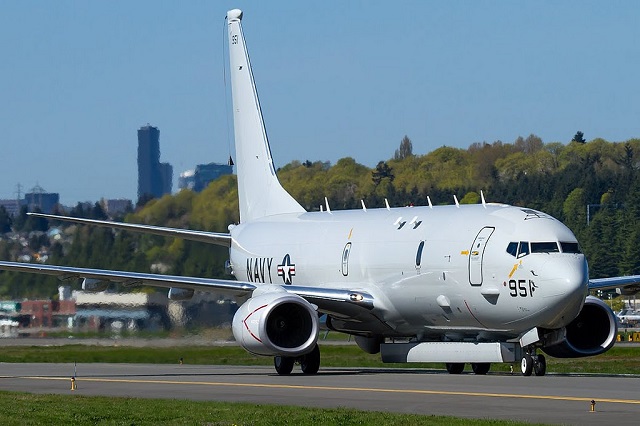| |
|||
| a | |||
Naval
Defense News - USA |
|||
U.S.
Navy Continues Flight Testing APS-154 Advanced Airborne Sensor (AAS)
on P-8A Poseidon |
|||
The U.S. Navy continues integration and testing of the first Advanced
Airborne Sensor (AAS), designated the APS-154, aboard the P-8A Poseidon.
Testing will confirm the ability of the P-8A and AAS to operate safely
and efficiently. Successful testing of AAS on the P-8A is a significant
milestone enabling production decisions and leading up to the initial
deployment of AAS. |
|||
 A
U.S. Navy P-8A Poseidon maritime patrol aircraft was recently spotted
at the Boeing headquarter's in Seattle conducting tests (including flight
tests) with Raytheon's Advanced Airborne Sensor (AAS) fitted under the
aircraft. Picture from bmpd.livejournal.com A
U.S. Navy P-8A Poseidon maritime patrol aircraft was recently spotted
at the Boeing headquarter's in Seattle conducting tests (including flight
tests) with Raytheon's Advanced Airborne Sensor (AAS) fitted under the
aircraft. Picture from bmpd.livejournal.com |
|||
AAS
is an externally mounted radar and a follow-on system to the currently
deployed Littoral Surveillance Radar System (LSRS). LSRS currently provides
a broad range of capabilities against moving and stationary targets
at sea and on land. LSRS is currently operational on U.S. Navy P-3C
Orions. According to Raytheon, the AAS is an active electronically scanned
array (AESA) radar system with next-generation line-of-site capability.
Like LSRS, AAS is an integrated Intelligence, Surveillance, Reconnaissance and Targeting (ISR&T) asset, with the additional capability of Mast and Periscope Detection (MPD). AAS employment will increase the Combatant Commanders’ war fighting effectiveness by ensuring a situational awareness advantage, achieving information dominance throughout all campaign phases, and providing on-demand, actionable sensor data to support precision targeting against threats at sea and on land. Link to P-8A Poseidon Maritime Patrol Aircraft technical datasheet |
|
Spotter
(OwnsGermany) video showing P-8A Poseidon flight test with the AN/APS-154 |
|||










